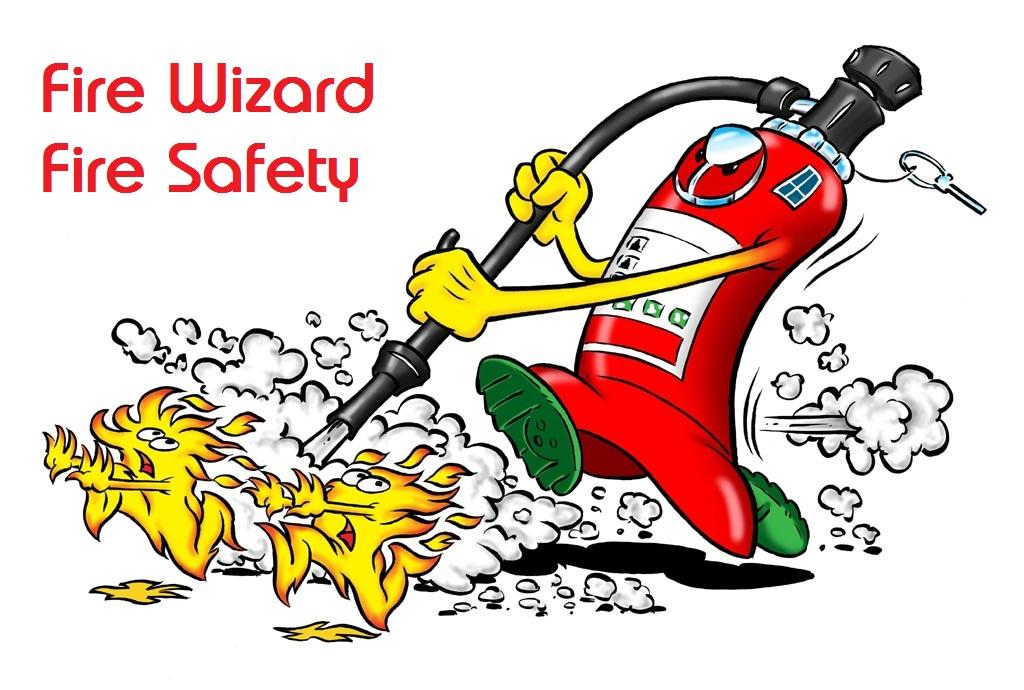-
Posts
2,707 -
Joined
-
Last visited
Everything posted by AnthonyB
-
The Article 50 Guidance sums up the scope of the law as follows (my highlighting): "The Guide is intended to support the application of the Regulatory Reform (Fire Safety) Order 2005 (as amended) and the Fire Safety (England) Regulations 2022 to the common parts of small blocks of flats (limited to 3 storeys) as well as the building’s structure, external walls and the doors between the flats and common parts. This includes premises with more than one storey, which has its own private exit, and within which there are no internal spaces used by more than one household, such as common hallways, landings and stairwells (“maisonettes”). "
-

New Article 21A of the Regulatory Reform Fire Safety Order 2005
AnthonyB replied to AdrianO's topic in Fire Risk Assessments
But not all supported housing is a single dwelling - I have been to several that are: - Purpose Built Flats - HMO's - Sheltered Housing -
It's very wrong if in the UK! You should probably be in touch with your local fire service enforcement team as well as your local council housing enforcement team, it has illegal flat conversion written all over that description - you aren't in a London Borough by any chance?
-
From the manufacturer: Trimming Allowance To maintain the integrity of this door you may trim up to 3mm off each edge, up to 3mm off the top and up to 3mm off the bottom*. Trimming beyond this amount will invalidate this doors fire certification. Trimming Note In trimming any part of this door you will need to re-seal the exposed edges. In trimming the height the core may become exposed. Please contact a Door Expert about the appropriate finishes available for this door.
-
No it isn't mandatory in an existing premises. A new system in a care home exceeding 10 beds would require an addressable system, but in existing homes it's up to the risk assessment to determine if the zoning & zone size/complexity is adequate to remain conventional or whether an upgrade to addressable would result in quicker and more accurate search times.
-
You must carry out a fire risk assessment and keep a written record of it - guidance here: https://www.gov.uk/government/publications/making-your-small-non-domestic-premises-safe-from-fire The number of persons can be accommodated by a single exit, but travel distances and layout could affect this. You should not exceed a travel distance of 25m measured from any part of the premises to a final exit door that leads directly to a place of safety, clear of the premises
-
What is the width of the exit? You should keep that outside it unless you want a pinch point, how many would be using the route worst case?
-
Employees are involved, I doubt they are on an AST & the accommodation will be in connection with their employment so the FSO could be seen to apply. They are relevant persons who would be affected directly by a fire in the non domestic premises below so the FSO applies to some extent (with respect to the FRA for the unit) Usually where the FSO doesn't apply the Housing Act does. The whole lot sounds like it's worth a multiagency inspection by Council & Fire Service (& others..)
-
You aren't in Scotland, it isn't retrospective & the BS is not law.
-
It should only go out when the power is off and it has switched to battery power (with the main light illuminating). Even with self contained self testing fittings at least one of the colour indicator LEDs should be lit or at least flashing.
-
No, it is not retrospective, nor is a British Standard a legal requirement. A Fire Risk Assessment can suggest an upgrade is necessary but only where it can be clearly demonstrated that protection provided by the existing old standards is substantially inadequate for the risks present and only the new standard will adequately safeguard the safety of persons. I've helped advise clients before in similar situations, they took the matter to a First Tier Tribunal & they won and did not have to pay for the unnecessary works a local authority had carried out. Local Authorities and Fire Services can be challenged and it is by no means unprecedented for them to loose appeals and determinations.
-
There hasn't been and still isn't a requirement for emergency lighting in hotel bedrooms, it's bizarre that places have it fitted!
- 17 replies
-
- emergency lighting
- hotel
-
(and 1 more)
Tagged with:
-
Needs a decent Fire Risk Assessment as this set up doesn't satisfy the needs for either a stay put block of flats or a simultaneous evacuation block of flats, so the first thing needed is a determination as to which it should be. If simultaneous evacuation the common system should have heats and sounders in the flat's internal hallways not just the common areas If stay put there should be no common system at all unless there is an automatic smoke control system in which case there should be detection but no sounders or call points.
-
https://croner.co.uk/resources/managing-health-safety/what-should-employers-consider-for-e-bikes-in-the-workplace/ https://www.london-fire.gov.uk/safety/the-workplace/e-bike-and-e-scooters-guidance-for-responsible-persons/
-

Service 'shaft' leading to cleaners cupboard
AnthonyB replied to Guy D's topic in Passive Fire Protection
Plenty of suitable products available - use this step by step selector to determine what will d0 - https://www.hilti.co.uk/content/hilti/E1/GB/en/business/business/engineering/fire-protection/firestop-selector.html Or get a competent passive fire protection contractor to deal with it. -

Service 'shaft' leading to cleaners cupboard
AnthonyB replied to Guy D's topic in Passive Fire Protection
You would need to fire stop the pipes and cables (not with aerosol fire foam) to prevent hidden spread of smoke and fire, doors are of little use if the fire can pass them by. Toilets don't usually need fire doors unless they contain a particular risk - you could either upgrade the cupboard door or the toilet door but no need to do both. -
They will have to take individual responsibility as you can't expect workers from another part of the site to enter a building that may be the source of the fire, they have a legal obligation to cooperate with measures provided for their health & safety. As long as you have a suitable lone worker system (these days signing in on apps has supplemented paper sign in books and in/out boards) then they have to play their part.
-

New Article 21A of the Regulatory Reform Fire Safety Order 2005
AnthonyB replied to AdrianO's topic in Fire Risk Assessments
You would have to present the information in a way that is tailored to their vulnerabilities/disabilities, simplified as required. If they were not deemed as having suitable capacity under MCA 2005 then I suppose you would only have to inform those with legal responsibility/guardianship. Until some better guidance comes out this is the best I can think of! -
No. Grade F (battery only) devices would not be suitable as part of a communal fire alarm system, they are only really acceptable for single dwellings that predate the Building Regs requirement for mains alarms. The system should be a commercial grade system (depending on which Government guide you use either a BS5839-6 Grade A or BS5839-1 system, however from an equipment point of view they are identical, just some design differences) There is scope in the outgoing LACORS guide for a communal grade D system (domestic mains powered) but this is usually only for ground and first floor buildings. None of these requirements are new, they have simply been ignored until Grenfell brought block fire safety to the forefront.
-
Google lens is stumped too - nearest example it could find was an air vent cover!
-
It is a bit slow on there sadly. Building Regs in England, Wales, Scotland or NI? It isn't a defined Key Term in ADB, but the Oxford Dictionary suggests "ancillary (to something) providing necessary support to the main work or activities of an organization" A kitchen could be seen as ancillary to the running of a restaurant, nor is it defined as one of the places of special fire hazard in the same document. You see plenty of restaurants with the kitchen partly or fully open to the seating area and others fully enclosed or with fire shutters, seemingly according to the whim of the Authority Having Jurisdiction for where the premises is built/fitted out.
-
Building Regulations do indeed still have the statutory bar. Fire Safety Regulations don't as it was removed with the repeal of the Fire Precautions Act which used to take the same approach with fire certificates (which led to some rather outdated precautions remaining in place well past their inadequacy was fatally proved). This means that whilst there is no automatic requirement to upgrade something (unless explicit in a regulation under the Order) it can't be automatically accepted either just because it was OK 20+ years ago - this is where the risk assessment process comes in. External walls, including balconies and windows etc are explicitly required to be assessed for fire risk in all premises with 2 or more dwellings - however this risk assessment is likely to find most low rise blocks low risk partly because the building standards for these hasn't required high standards of fire performance and still doesn't so it would be wrong to require a higher standard than even a new build requires!
-
It has to be considered no matter what the height - the law is clear on this. However the likelihood of being other than low risk is small, the height being one of the factors to consider when assessing the risk.
-
Flats from 1961 were built to Building Regulations that were based around stay put. Conversions are usually expected to conform to modern Building Regulations i.e. from 1/1/1992 - but the date of conversion is not a hard rule as there are post 1992 conversions requiring simultaneous evacuation and pre 1992 ones that can actually operate stay put. A good assessor won't be blinded by the date, it's a pointer and no more.

